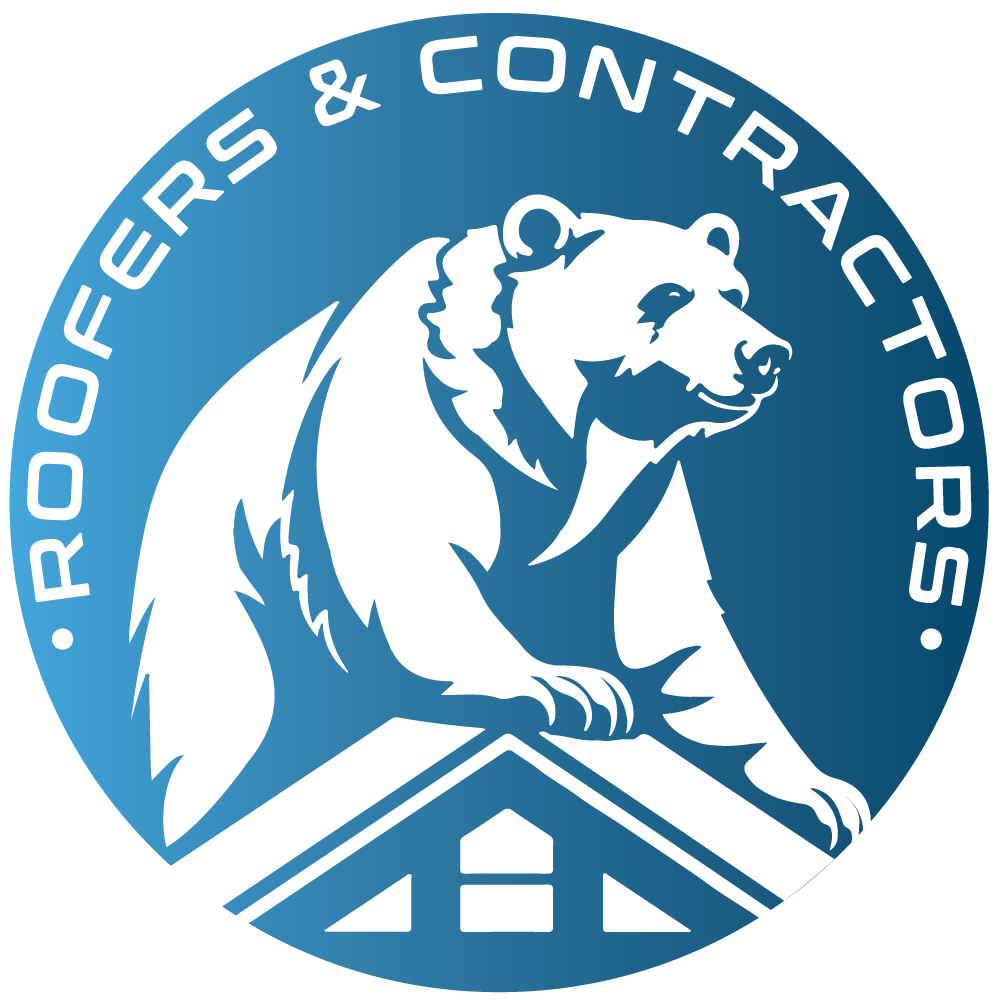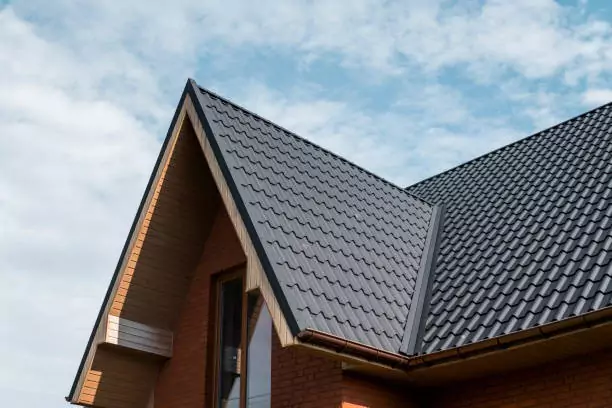Is your roof ready to weather the storm? Don’t wait until it’s too late to find out! Roswell’s Annual Roofing Inspection Checklist is here to help you ensure that your roof is in top shape and ready to protect your home from the elements. From checking for signs of damage to ensuring proper ventilation, this checklist covers all the bases so you can rest easy knowing your home is safe and secure. Don’t let a leaky roof rain on your parade – follow our checklist and keep your roof in tip-top condition year-round!
Understanding the local climate and its impact on roofs in Roswell
Understanding the local climate and its impact on roofs is essential for every homeowner in Roswell. The weather in this area can be quite unpredictable, with hot summers and cold winters. This fluctuation in temperature can have a significant impact on the condition of your roof, making it vital to conduct annual roofing inspections.
The most common roofing materials used in Roswell are asphalt shingles and metal roofs. While both types of roofing can withstand extreme temperatures, they still require regular maintenance to ensure their longevity. In hot summer months, the intense heat can cause asphalt shingles to crack or blister, while metal roofs may expand and contract due to temperature changes, leading to loose screws or panels.
On the other hand, during freezing winter temperatures, precipitation such as snow and ice can accumulate on roofs. This excess weight puts pressure on the structure and could potentially cause damage if not promptly removed. Additionally, ice dams may form along gutters and eaves due to melting snow refreezing at colder areas of the roof. These dams prevent proper drainage of water from your roof and could lead to leaks or even structural damage if left unaddressed.
Aside from extreme temperatures, strong winds are also a common occurrence in Roswell’s climate. These gusts can lift shingles or panels off your roof or blow debris onto it, causing potential damage over time if not dealt with promptly.
Moreover, Georgia is known for its severe thunderstorms during springtime that often bring heavy rainfalls and hailstorms. Hailstones hitting your roof at high speeds can dent metal roofing or break asphalt shingles’ granules, reducing their effectiveness as a protective barrier against water.
Given these weather conditions prevalent in Roswell throughout the year, it is crucial to include thorough inspections of your roof in your annual home maintenance checklist. By understanding how climate impacts different types of roofing materials and being aware of potential risks associated with each season’s weather patterns, you will be better equipped to identify and address any issues promptly.
The local climate in Roswell plays a significant role in the health and longevity of your roof. Regular inspections can help prevent major damages caused by extreme temperatures, heavy precipitation, or strong winds. By staying vigilant and addressing any problems as they arise, you can ensure that your roof continues to protect your home for years to come.
Key factors to consider when inspecting a roof
When it comes to maintaining the overall health and longevity of your roof, regular inspections are key. As a homeowner in Roswell, it is important to conduct annual roofing inspections to catch any potential issues early on and prevent costly repairs down the line. However, not all roof inspections are created equal. In order to ensure a thorough and effective inspection, there are several key factors that should be considered.
First and foremost, safety should always be the top priority when inspecting a roof. It is essential to have proper equipment such as a sturdy ladder and non-slip shoes to safely access the roof. If you are uncomfortable with heights or unsure of your ability to safely inspect the roof, it is best to hire a professional.
Once you have ensured safety measures, it is important to consider the weather conditions before conducting an inspection. Extreme temperatures, high winds, or heavy rain can make it difficult or even dangerous to thoroughly examine the roof. Ideally, inspections should take place on dry days with moderate temperatures.
Next, pay attention to the age of your roof when conducting an inspection. The older your roof is, the more frequent inspections may be necessary. A general rule of thumb is that roofs over 20 years old should be inspected twice per year while newer roofs can typically go up to three years between inspections.
During an inspection, one of the main things you will want to look for is any signs of damage or wear and tear on your roof’s shingles or tiles. This includes cracks, curls or missing pieces which could indicate water has penetrated through and caused interior damage. Additionally, keep an eye out for any areas where debris has accumulated as this can also lead to damage if left unaddressed.
Another important factor when inspecting a roof is checking for proper drainage systems such as gutters and downspouts. These play a crucial role in preventing water from pooling on your roof which can cause leaks and other issues over time. Make sure to clear any debris from gutters and ensure they are properly attached to the roof.
It is important to have a general understanding of your roof’s material and maintenance requirements. Different materials may require different levels of upkeep or repairs, so it is important to know what to look for during an inspection.
By considering these key factors when inspecting your roof in Roswell, you can catch potential issues early on and ensure the longevity of your home’s most important structure. Remember, if you ever have any concerns or are unsure about conducting an inspection yourself, it is always best to seek professional help from a trusted roofing company.
– Age of the roof
The age of a roof is an important factor to consider when conducting an annual roofing inspection. A roof’s age can give you an idea of its overall condition and potential issues that may arise in the future. In general, most roofs have a lifespan of 20-25 years, but this can vary depending on factors such as the type of material used and weather conditions.
If your roof is approaching the end of its expected lifespan, it is crucial to pay extra attention during inspections as it may be more susceptible to damage or wear and tear. On the other hand, if your roof is relatively new, regular inspections can help identify any potential problems early on before they become major issues.
One way to determine the age of your roof is by checking its warranty. Most manufacturers offer warranties for their roofing materials, which typically range from 20-50 years. If you have access to the original documents from when your roof was installed, you can check for any information regarding its warranty and estimated lifespan.
Another way to estimate your roof’s age is by inspecting the shingles or tiles themselves. Over time, they may start showing signs of aging such as curling, cracking, or discoloration. These are all indications that your roof may need repairs or replacement soon.
It’s also essential to keep track of any previous maintenance or repairs done on your roof. This information can give you a better understanding of what areas may need more attention during inspections based on past issues.
If you’re unsure about your roof’s age or history, it might be best to consult with a professional roofing contractor who can assess its condition and provide recommendations for repairs or replacements if needed.
In addition to knowing your roof’s age, it’s also important to consider external factors that could affect its longevity. For example, homes located in areas with harsh weather conditions such as strong winds or heavy rains may experience more wear and tear than those in milder climates.
The age of your roof is a crucial factor to keep in mind during annual roofing inspections. By being aware of its age and potential vulnerabilities, you can take proactive measures to maintain its condition and prevent any major issues from arising. Remember to always document your findings and seek professional assistance if needed to ensure the longevity and safety of your roof.
– Signs of damage or wear and tear
Signs of damage or wear and tear are important to look out for during your annual roofing inspection. Catching these issues early can save you from costly repairs down the road.
One of the most obvious signs of damage is missing or broken shingles. This can be caused by strong winds, heavy rain, or even animals on your roof. Not only does this make your roof vulnerable to water damage, but it also detracts from the overall appearance of your home. It’s important to replace any missing or damaged shingles as soon as possible.
Another sign of wear and tear is cracked or curling shingles. Over time, exposure to harsh weather conditions can cause shingles to crack and lose their protective coating. This leaves your roof vulnerable to leaks and further damage. Similarly, if you notice that your shingles are starting to curl at the edges, it’s a sign that they are reaching the end of their lifespan and will need replacing soon.
Leaks in your ceiling or attic are also indicators of potential roof damage. These leaks can be caused by a variety of factors such as damaged flashing, loose nails, or deteriorated sealant around vents and chimneys. If left unchecked, these leaks can lead to mold growth and structural damage.
Gutters play an important role in maintaining the health of your roof. During your inspection, check for any blockages or debris build-up in your gutters which can prevent proper drainage and cause water to pool on your roof. Additionally, make sure that all gutters are securely attached to your home and not sagging or pulling away from the house.
Inspecting for signs of moisture is crucial in identifying potential problems with your roof. Look for water stains on ceilings or walls inside the house as well as damp spots in the attic. These could indicate a leaky roof or poor ventilation which could lead to mold growth.
Pay attention to any visible signs of aging such as rusted flashing, cracked caulking, or damaged chimney caps. These may seem like small issues, but if left unaddressed they can lead to bigger problems and costly repairs.
Keeping an eye out for signs of damage or wear and tear during your annual roofing inspection is crucial in maintaining the health and longevity of your roof. Addressing these issues promptly can save you time, money, and headaches in the long run. If you notice any of these signs during your inspection, be sure to contact a professional roofer for further assessment and repairs.
– Gutters, downspouts, and drainage systems
Gutters, downspouts, and drainage systems are essential components of a roofing system that play a crucial role in keeping your home safe and protected from water damage. These elements work together to divert rainwater away from the roof and foundation of your home, preventing potential structural issues and costly repairs.
During an annual roofing inspection, it is important to thoroughly check the gutters, downspouts, and drainage systems for any signs of damage or clogging. Here are some key areas to focus on:
- Gutters: The gutter system is responsible for collecting rainwater from the roof and channeling it towards the downspouts. It is important to inspect the gutters for any signs of cracks, holes, or rusting as these can lead to leaks and water damage. Additionally, make sure that the gutters are securely attached to the fascia board and free from debris such as leaves, twigs, and other obstructions.
- Downspouts: Downspouts are vertical pipes that carry water from the gutters down to ground level. During your inspection, check for any clogs or blockages in the downspouts that may prevent proper drainage. You can use a garden hose to flush out any debris stuck inside the pipes.
- Drainage Systems: A proper drainage system is crucial in preventing water from pooling around your home’s foundation which can cause structural damage over time. Inspect all surface drains around your property for any signs of blockages or damages such as cracks or breaks in piping.
- Gutter Guards: Installing gutter guards can be a great way to prevent leaves, twigs, and debris from clogging up your gutter system. During your inspection, make sure that these guards are properly installed and not damaged in any way.
- Soffits & Fascia: Soffits are located under the eaves of your roof while fascia boards run along its edges. These areas are prone to water damage if the gutters are not functioning properly. Inspect these components for any signs of rot, cracks, or other damages that may compromise their structural integrity.
Proper maintenance and regular inspections of your gutters, downspouts, and drainage systems can save you from potential water damage and costly repairs in the long run. If you notice any issues during your inspection, it is important to address them promptly to avoid further damage. A professional roofing contractor can help with any necessary repairs or replacements to ensure that your gutter system is working efficiently to protect your home.
– Attic ventilation
Attic ventilation is a crucial aspect of maintaining the overall health and longevity of your roof. Often overlooked, proper attic ventilation can play a significant role in preventing damage to your roof and ultimately save you money in the long run.
What is Attic Ventilation?
Attic ventilation refers to the exchange of air between the inside of your attic and the outside environment. It involves both intake vents, which allow fresh air into the attic, and exhaust vents, which allow hot, moist air to escape.
Why is it Important?
Proper attic ventilation serves two main purposes – regulating temperature and preventing moisture buildup. During hot summer months, attics can become extremely hot due to the sun’s heat beating down on the roof. Without adequate ventilation, this trapped heat can cause shingles to deteriorate prematurely and even lead to structural damage.
In addition to regulating temperature, proper attic ventilation also helps prevent moisture buildup. When warm and humid air gets trapped in an unventilated attic, it can condense on cold surfaces like rafters or insulation. This leads to mold growth, rotting wood, and potential damage to your ceiling.
Signs of Poor Attic Ventilation
There are several signs that may indicate poor attic ventilation:
- Ice Dams: In colder climates where snow accumulation is common, ice dams can form when warm air from a poorly ventilated attic melts snow on the roof. As this water refreezes at the eaves, it creates a barrier that prevents proper drainage and potentially causes water leaks.
- Excessive Energy Costs: If you notice a significant increase in your energy bills without any other obvious explanation (such as HVAC system issues), it could be due to inadequate airflow caused by poor attic ventilation.
- Musty Odors: The presence of mold or mildew in your home may indicate excessive moisture levels caused by poor attic ventilation.
- Shingle Damage: Buckling or curling shingles can be a sign of poor attic ventilation, as trapped heat can cause the shingles to expand and contract, leading to damage.
Importance of Regular Inspection and Maintenance
To ensure that your attic ventilation is functioning properly, it’s essential to include it in your annual roofing inspection. A professional roofer will check for any signs of poor ventilation, including clogged vents or inadequate airflow.
Regular maintenance can also help prevent issues with attic ventilation. Keep an eye on your intake and exhaust vents to ensure they are not blocked by debris or insulation. Additionally, make sure that your attic is adequately insulated to maintain proper temperature regulation.
Proper attic ventilation is crucial for maintaining a healthy roof. By including it in your annual roofing inspection checklist and conducting regular maintenance, you can ensure that your roof stays in top condition for years to come.
For all your roofing needs, don’t hesitate to reach out to our team of experts. Whether you require installation, maintenance, or emergency repairs, we are equipped to provide professional services that ensure your roof remains in prime condition. Contact us today to get a reliable, efficient approach designed specifically for your needs. Let us help you protect your home with our expertise.




